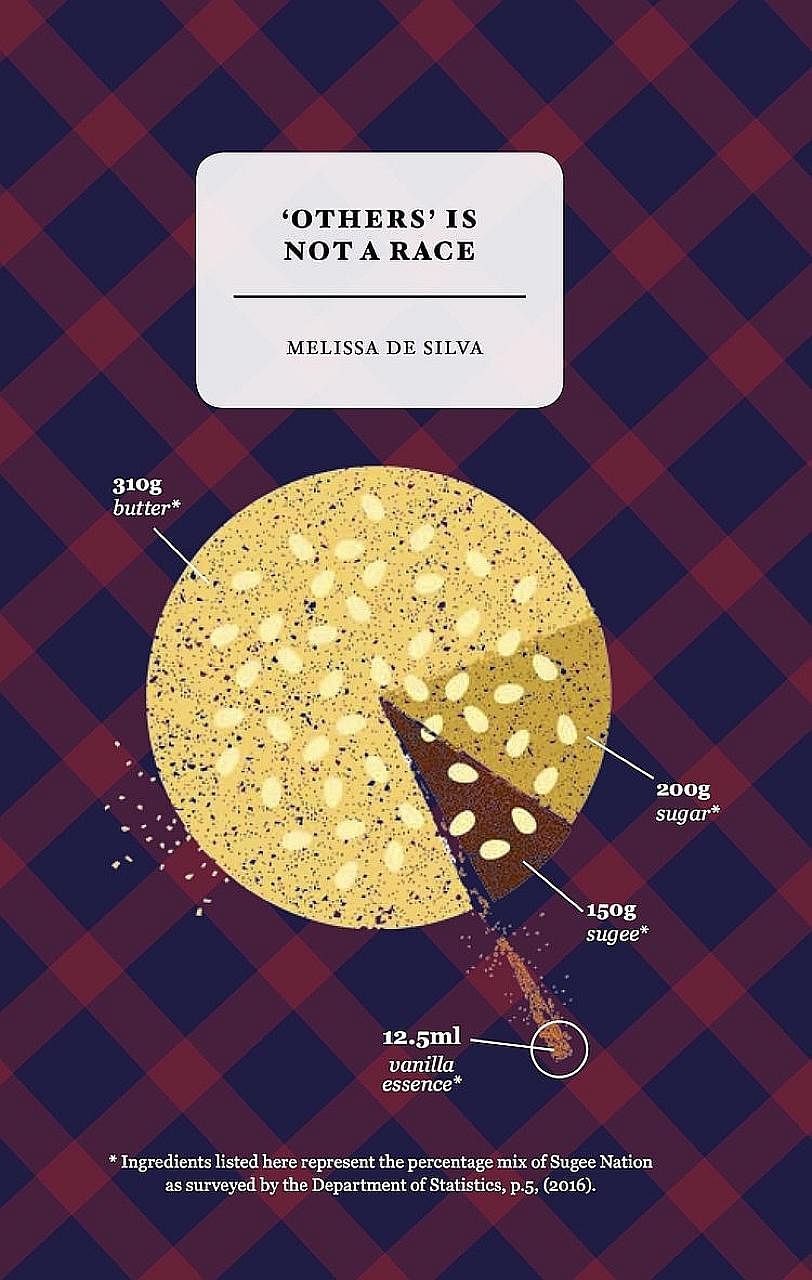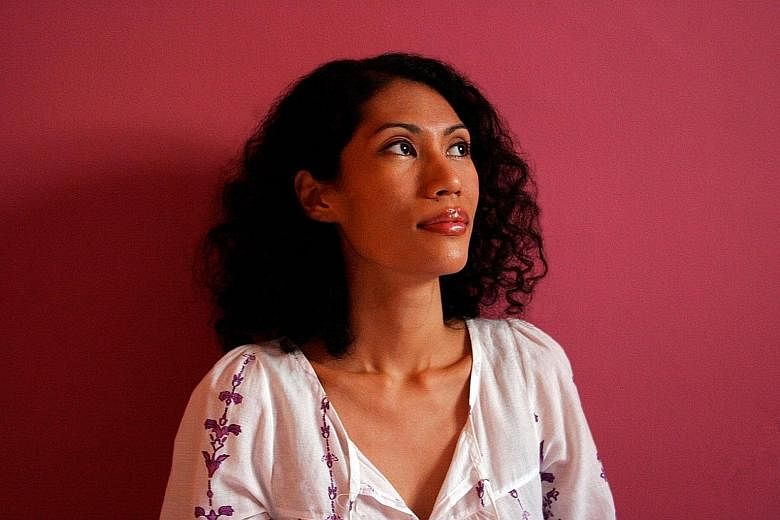FICTION
'OTHERS' IS NOT A RACE
By Melissa De Silva
Math Paper Press/Paperback/ 101 pages/$19/BooksActually/ 3.5 stars
It is around the beginning of the 22nd century and two men - Gerald Pereira and Martin Desker - meet at a cafe for the first time.
They are the only two Eurasians left in Singapore, according to the census. But Martin learns from Gerald that he has children.
"There are two more of us!", he exclaims in joy, only to find out that Gerald has registered their race as Filipino, after their mother.
Why were they not registered as part-Eurasian at least, Martin probes. Gerald says: "I don't have anything Eurasian to give them. At least (my wife) has a whole bloody country full of culture... the boys inherit all that."

The anxieties of growing up Eurasian in a country which appears to obscure the existence of the community with its rigid Chinese, Malay, Indian and Others model of racial classification are acutely captured in ex-journalist Melissa De Silva's debut collection of short stories and essays.
As she suggests in the speculative episode above, holding onto one's sense of identity as a third-or fourth-generation Eurasian Singaporean is a process fraught with complexities. "We Eurasians do not have many visible, tangible traits to point at and go, ta-da! Culture," observes De Silva, almost apologetic for this cultural lack.
Yet, there remains a guttural instinct to defend and possess this cultural identity which, despite its deep historical roots, remains difficult to define and document.
The stories are at their most compelling when De Silva mines her own experiences. Details in the milieu of modern Singaporean life are meticulously drawn to unravel the subtleties of the contradictions that lie at the heart of her preoccupations.
In one story, an afternoon tea with former colleagues renders her tongue-tied when a slice of sugee cake - an Eurasian classic - turns out to be disappointing in taste.
"I wanted to speak up for sugee, to defend it," De Silva recounts impassionately, commenting on the royal icing that accompanies the cake. "It's an icing that holds its head high, completely unabashed."
Her words also ring with poignancy when she addresses the issue of language and trauma - the difficulty of struggling with Malay in school and the relief and joy of discovering Kristang, her mother tongue.
But the collection of stories, which flits from such confessional essays to interviews with older family members to even a satirical letter to policymakers, can appear discordant when read as a whole.
There are moments, especially in the interviews, when the collection feels more like an attempt at documenting one's family history than an exercise in meaningful storytelling.
Still, one would be hard-pressed to fault De Silva for this attempt to write Eurasian history and identity into the fold of the national narrative for posterity.
After all, it was only last year that people were questioning if Olympic gold medallist Joseph Schooling, a fellow Eurasian, was a true-blue Singaporean. "How is it that... 52 years after we became a nation, such ignorance still breeds?" she asks in a poem. "We deserve to have our identity spoken forth/The word 'Eurasian' ribboning into the public sphere."
In making the writing of this collection a deeply personal exercise, De Silva's voice has drawn attention to a community in Singapore that has long remained on the margins.
If you like this, read: The Australian Fiance by Simone Lazaroo, (Picador, 2000, $11.80, Amazon.com). The novel, set in the late 1940s, examines issues of race and gender faced by an Eurasian woman from Singapore when she falls for an Australian man and travels to Australia as his fiance.


